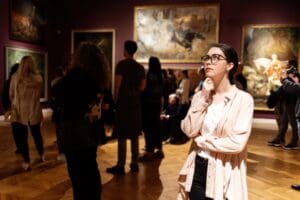Museums and galleries are often seen as cultural treasures, places where history, art, and science are preserved for future generations.
However, their value extends far beyond their cultural significance. These institutions have a profound economic impact, driving tourism, creating jobs, and supporting local businesses.
Across the globe, cities and nations are beginning to realize the full potential of investing in cultural assets. Museums and galleries are no longer seen only as cultural symbols; they are economic powerhouses that can transform communities.
Boosting Local Economies
Tourism is the most visible way museums and galleries contribute to the economy. Iconic institutions like the Louvre in Paris or the British Museum in London attract millions of visitors annually. These tourists buy more than entry tickets, they spend money on hotels, restaurants, transport, and shopping. This spending ripples through local economies, benefiting a wide range of businesses.
Museums and other cultural facilities can also be crucial in smaller cities by drawing visitors from the exterior. For example, cities with lesser-known galleries often see increased foot traffic during special exhibitions or exceptional events. Local businesses, from cafés to gift shops, thrive on this influx of people.
Museums are major economic contributors. Running a museum requires a diverse team, from curators and security staff to marketing professionals and maintenance workers. Renovations, exhibit installations, and daily operations also create opportunities for local suppliers and contractors and contribute to a region’s economic dynamism.
Creating Lasting Economic Stability
As said before, the financial benefits of museums and galleries don’t stop at ticket sales. These institutions improve the overall appeal of cities and regions, creating attractiveness for potential residents and companies. A vibrant cultural scene often draws professionals and families looking for a high quality of life. This, in turn, helps local economies by increasing demand for housing, schools, and services. It is also an important source of increase in land value.
The cultural sector is a significant part of the UK’s economy. Art institutions contribute nearly 5% of GDP, according to recent reports. This figure highlights how important these organizations are, not just for their cultural contributions but as pillars of economic stability.
Generating a Positive Social Impact
Museums and galleries also invest in education and outreach programs. These initiatives benefit local communities by offering workshops, lectures, and other diverse activities. Schools often partner with museums to introduce students to art and enhance their educational programs. These collaborations help foster a sense of pride and engagement in the local community.
Cultural outreach also makes regions more appealing to investors. Companies often choose to establish headquarters or offices in cities with vibrant cultural offerings, as they offer a better lifestyle for the employees and their families. This creates a cycle of economic growth, where cultural investments lead to business growth and vice versa.
Qatar: The Modern Example
Qatar is a standout example of how cultural investment can drive economic development. Over the past two decades, the country has strategically developed its cultural sector to diversify its economy.
The National Museum of Qatar, designed by renowned architect Jean Nouvel, is a testament to this vision. Opened in 2019, the museum is more than a cultural landmark; it’s a key part of Qatar’s economic strategy. Indeed, the country relies on a new public image to continue fostering investment in various sectors so that it can thrive without depending on oil.
In addition to individual museums, Qatar has implemented large-scale cultural initiatives like the Years of Culture program. This annual initiative promotes cultural exchange with other nations, fostering international partnerships. Beyond bringing in tourists, scholars, and artists, Years Of Culture is a great occasion to develop solid bonds with foreign countries and extend the diplomatic influence of Qatar.
Qatar’s success shows that cultural investments can yield significant returns, which are not only financial. The country demonstrates how to use culture as a tool for economic growth while strengthening its national identity.
What Lessons for Other Nations ?
Qatar’s approach offers valuable examples for other nations looking to leverage their cultural assets. Investing in museums and galleries can transform economies, particularly in regions that may not traditionally bet on tourism, and create a stronger sense of unity around shared heritages.
Moreover, costly development planning is not always useful, especially when it is possible to start by building or enhancing existing cultural facilities. Developing partnerships with schools, universities, and local businesses can help expand the reach of these organizations to a broader public. Governments can also support cultural programs that engage diverse communities and ensure that museums are accessible to all.
Investing in culture does not come without challenges and risks. Museums require significant funding to maintain operations and develop new exhibits. However, the long-term economic, social, and historical benefits often outweigh these costs.
Final thoughts
Museums are not just about preserving the past, they are investments in the future, which is even more the case with art galleries. They generate revenue, create jobs, and enrich communities. Their impact is felt far beyond their walls, influencing everything from tourism to education and urban development.
As cities and nations are always looking for ways to improve their economic model, cultural investment should be a priority. By funding museums and galleries, governments and businesses can unlock significant economic potential.
Read more:
Are museums and galleries vectors of Economic Growth?

